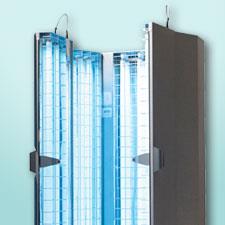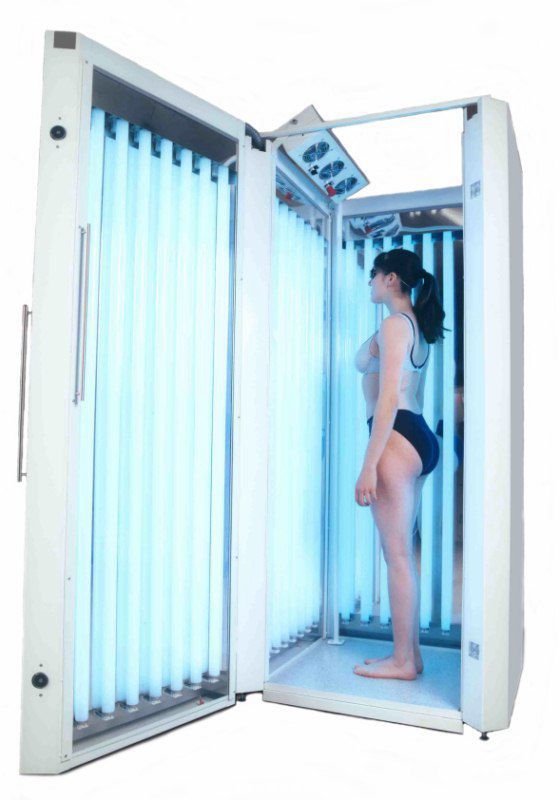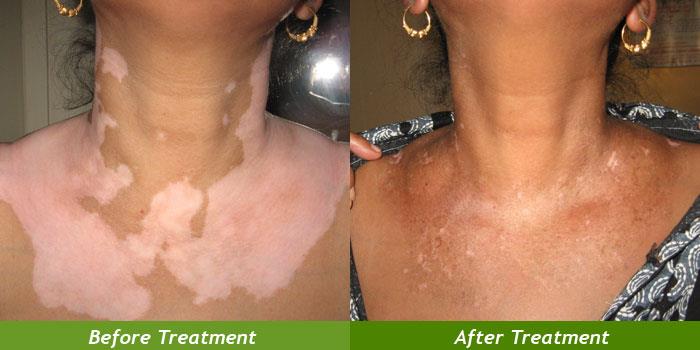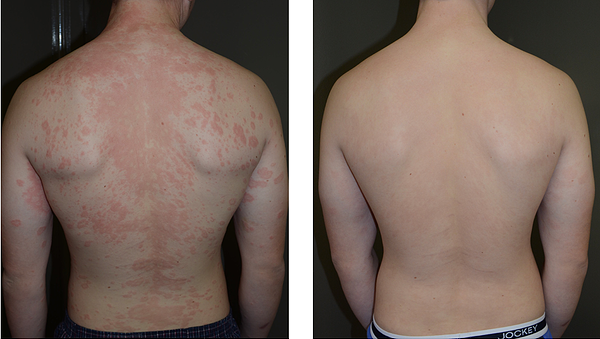
NBUVB
Psoriasis treatment
What is ultraviolet B radiation (UVB)?
Ultraviolet (UV) rays are produced by the sun. Although they can’t be seen, they are an important part of sunlight and are grouped into different wavelengths: UVA, UVB and UVC. UVA rays penetrate skin and cause it to darken or tan. UVB rays are mostly absorbed by the epidermis, which is the top layer of our skin and is responsible for sunburn. UVC rays are absorbed by the Earth’s ozone layer, so they do not reach us. Broad band UVB radiation has been found to treat skin conditions that are caused by overactive immune cells in the skin, as it reduces their activity. A specific wavelength of UVB (311 to 312nm) is thought to be the most useful range for treating skin conditions. This is referred to as narrowband UVB or TLO-1. Treatment with UV is often referred to as phototherapy. What can narrow band UVB treat? It is mainly used to treat psoriasis, but it can also be used for other skin conditions such as acne, eczema, vitiligo, mycosis fungoides, and polymorphic light eruption.





